Phthalic acid
Synonym(s):1,2-Benzenedicarboxylic acid;Benzene-1,2-dicarboxylic acid;Phthalic acid
- CAS NO.:88-99-3
- Empirical Formula: C8H6O4
- Molecular Weight: 166.13
- MDL number: MFCD00002467
- EINECS: 201-873-2
- SAFETY DATA SHEET (SDS)
- Update Date: 2024-12-18 14:15:30
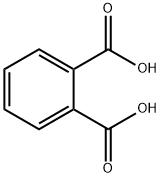
What is Phthalic acid?
Description
Phthalic acid is an aromatic dicarboxylic acid, with formula C6H4(CO2H)2. It is an isomer of isophthalic acid and terephthalic acid. Although phthalic acid is of modest commercial importance, the closely related derivative phthalic anhydride is a commodity chemical produced on a large scale.
Chemical properties
PHTHALIC ACID,C6H4(COOH)2, mp 208 °C (ortho), 330 °C (meta and iso), the ortho form sublimes and the meta and iso forms decompose with heat, sp gr 1.593 (ortho). Phthalic acid is very slightly soluble in H2O, soluble in alcohol, and slightly soluble in ether. The solid form is colorless, crystalline
The Uses of Phthalic acid
It is a dibasic acid, with pKa's of 2.89 and 5.51. The mono potassium salt, potassium hydrogen phthalate is a standard acid in analytical chemistry. Typically phthalate esters are prepared from the widely available phthalic anhydride. Reduction of phthalic acid with sodium amalgam in the presence of water gives the 1,3- cyclohexadiene derivative.
The Uses of Phthalic acid
Phthalic Acid (Phenyl-13C6, D4) is labelled Phthalic Acid (P384480) which is an organic reagent used to synthesize phthalates.
What are the applications of Application
Phthalic acid is an ortho-carboxylic acid benzoic acid derivative
Definition
ChEBI: A benzenedicarboxylic acid cosisting of two carboxy groups at ortho positions.
Definition
phthalic acid: colourlesscrystalline dicarboxylic acid,C6H4(COOH)2; r.d. 1.6; m.p. 207°C.The two –COOH groups are substitutedon adjacent carbon atoms ofthe ring, the technical name beingbenzene-1,2-dicarboxylic acid. Theacid is made from phthalic anhydride(benzene-1,2-dicarboxylic anhydride,C8H4O3), which is made by the catalyticoxidation of naphthalene. Theanhydride is used in making plasticizersand polyester resins.
Production Methods
Phthalic acid is produced by the catalytic oxidation of naphthalene directly to phthalic anhydride and a subsequent hydrolysis of the anhydride.
Phthalic acid was first obtained by French chemist Auguste Laurent in 1836 by oxidizing naphthalene tetrachloride. Believing the resulting substance to be a naphthalene derivative, he named it "naphthalic acid". After the Swiss chemist Jean Charles Galissard de Marignac determined its correct formula, Laurent gave it its present name. Manufacturing methods in the nineteenth century included oxidation of naphthalene tetrachloride with nitric acid, or, better, oxidation of the hydrocarbon with fuming sulfuric acid, using mercury or mercury(II) sulfate as a catalyst.
Synthesis Reference(s)
The Journal of Organic Chemistry, 30, p. 2414, 1965 DOI: 10.1021/jo01018a074
General Description
White crystals or fine white powder.
Air & Water Reactions
Insoluble in water.
Reactivity Profile
Phthalic acid is a carboxylic acid. Phthalic acid is sensitive to exposure to extreme heat. Phthalic acid reacts violently with nitric acid. Phthalic acid is incompatible with sodium nitrite. Phthalic acid is also incompatible with oxidizers. .
Fire Hazard
Phthalic acid is combustible.
Flammability and Explosibility
Not classified
Safety Profile
Moderately toxic by ingestion and intraperitoneal routes. A skin and mucous membrane irritant. Combustible when heated. In the form of dust (anhydride) it can explode. Mixtures with sodmm nitrite explode when heated. Violent reaction with HNO3. When heated to decomposition it emits acrid smoke and irritating fumes. Used in synthesis of dyes and dyestuffs, in medcines and perfumes.
Safety
The toxicity of phthalic acid is low with LD50 (mouse) of 550 mg/kg. However, many phthalate esters have been implicated as endocrine disruptors.
Purification Methods
Crystallise phthalic acid from water. [Beilstein 9 IV 3167.]
Isomers
Phthalic acid is one of three isomers of benzene dicarboxylic acid, the others being iso phthalic acid and terephthalic acid. Sometimes the term "phthalic acids" is used to refer to this family of isomers, but in the singular, "phthalic acid", refers exclusively to the ortho- isomer.
Properties of Phthalic acid
| Melting point: | 210-211 °C (dec.) (lit.) |
| Boiling point: | 214.32°C (rough estimate) |
| Density | 1.59 g/cm3 at 15 °C |
| vapor pressure | 7.8 hPa (191 °C) |
| refractive index | 1.5100 (estimate) |
| Flash point: | 168 °C |
| storage temp. | Store below +30°C. |
| solubility | methanol: 0.1 g/mL, clear |
| form | Powder |
| pka | 2.89(at 25℃) |
| color | White |
| PH | 3.2(1 mM solution);2.55(10 mM solution);2(100 mM solution); |
| Water Solubility | 7 g/L (25 ºC) |
| Merck | 14,7371 |
| BRN | 608199 |
| Dielectric constant | 5.1(Ambient) |
| Stability: | Stable. Combustible. Incompatible with strong oxidizing agents. |
| CAS DataBase Reference | 88-99-3(CAS DataBase Reference) |
| NIST Chemistry Reference | 1,2-Benzenedicarboxylic acid(88-99-3) |
| EPA Substance Registry System | Phthalic acid (88-99-3) |
Safety information for Phthalic acid
| Signal word | Warning |
| Pictogram(s) |
 Exclamation Mark Irritant GHS07 |
| GHS Hazard Statements |
H315:Skin corrosion/irritation H319:Serious eye damage/eye irritation H335:Specific target organ toxicity, single exposure;Respiratory tract irritation |
| Precautionary Statement Codes |
P261:Avoid breathing dust/fume/gas/mist/vapours/spray. P264:Wash hands thoroughly after handling. P264:Wash skin thouroughly after handling. P271:Use only outdoors or in a well-ventilated area. P280:Wear protective gloves/protective clothing/eye protection/face protection. P302+P352:IF ON SKIN: wash with plenty of soap and water. P305+P351+P338:IF IN EYES: Rinse cautiously with water for several minutes. Remove contact lenses, if present and easy to do. Continuerinsing. |
Computed Descriptors for Phthalic acid
| InChIKey | XNGIFLGASWRNHJ-UHFFFAOYSA-N |
Phthalic acid manufacturer
JSK Chemicals
ARRAKIS INDUSTRIES LLP
New Products
(S)-3-Aminobutanenitrile hydrochloride 4-Methylphenylacetic acid N-Boc-D-alaninol N-BOC-D/L-ALANINOL Tert-butyl bis(2-chloroethyl)carbamate N-octanoyl benzotriazole 3-Morpholino-1-(4-nitrophenyl)-5,6-dihydropyridin- 2(1H)-one Furan-2,5-Dicarboxylic Acid S-2-CHLORO PROPIONIC ACID ETHYL ISOCYANOACETATE 2-Bromo-1,3-Bis(Dimethylamino)Trimethinium Hexafluorophosphate 4-IODO BENZOIC ACID 3-NITRO-2-METHYL ANILINE 1-(2,4-DICHLOROPHENYL) ETHANAMINE (2-Hydroxyphenyl)acetonitrile 4-Bromopyrazole 5,6-Dimethoxyindanone 2-(Cyanocyclohexyl)acetic acid 4-methoxy-3,5-dinitropyridine 1-(4-(aminomethyl)benzyl)urea hydrochloride 2-aminopropyl benzoate hydrochloride diethyl 2-(2-((tertbutoxycarbonyl)amino) ethyl)malonate tert-butyl 4- (ureidomethyl)benzylcarbamate Ethyl-2-chloro((4-methoxyphenyl)hydrazono)acetateRelated products of tetrahydrofuran
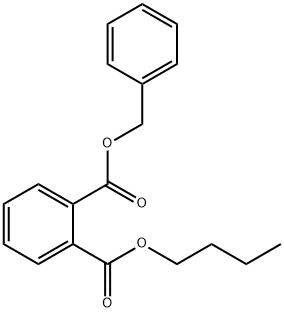
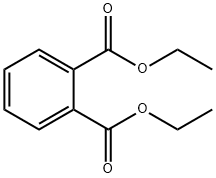
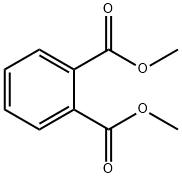
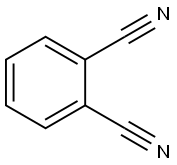
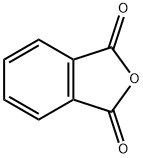


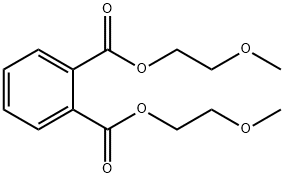
You may like
-
 Phthalic acid CAS 88-99-3View Details
Phthalic acid CAS 88-99-3View Details
88-99-3 -
 Phthalic acid CAS 88-99-3View Details
Phthalic acid CAS 88-99-3View Details
88-99-3 -
 Phthalic Acid pure CAS 88-99-3View Details
Phthalic Acid pure CAS 88-99-3View Details
88-99-3 -
 Phthalic acid 98% CAS 88-99-3View Details
Phthalic acid 98% CAS 88-99-3View Details
88-99-3 -
 Phthalic acid 99% (HPLC. GC) CAS 88-99-3View Details
Phthalic acid 99% (HPLC. GC) CAS 88-99-3View Details
88-99-3 -
 Phthalic acid CAS 88-99-3View Details
Phthalic acid CAS 88-99-3View Details
88-99-3 -
 Phthalate Standard for IC CASView Details
Phthalate Standard for IC CASView Details -
 Phthalic Acid CASView Details
Phthalic Acid CASView Details